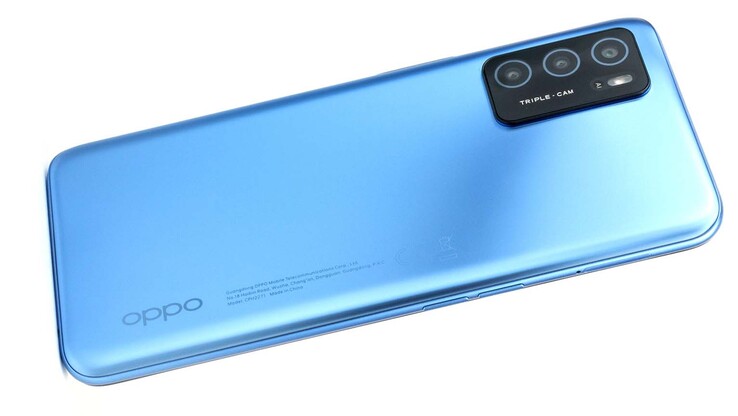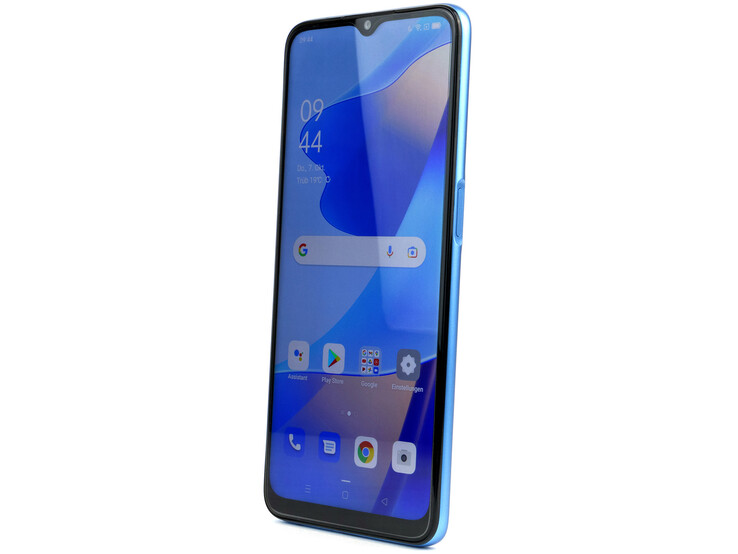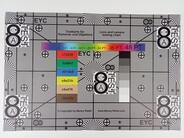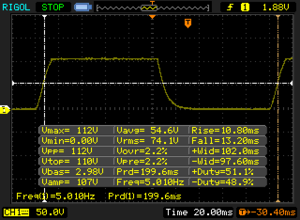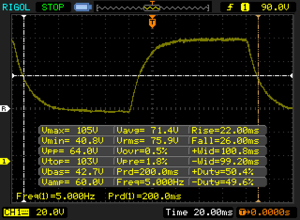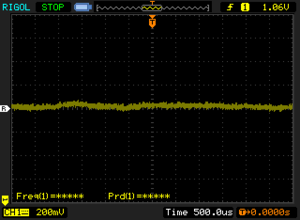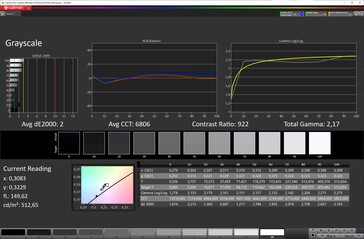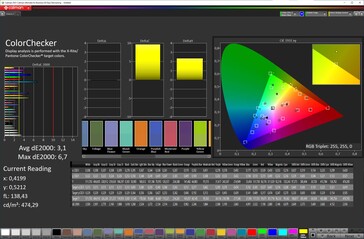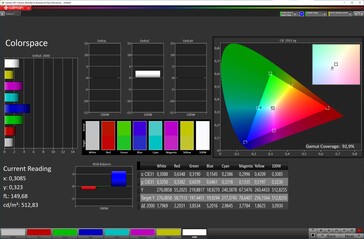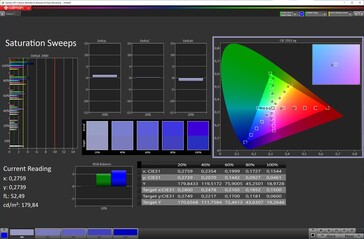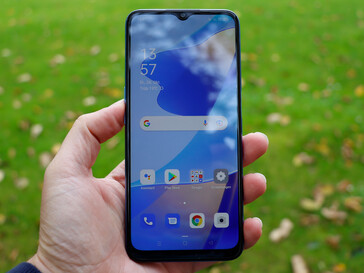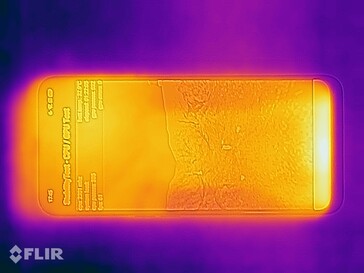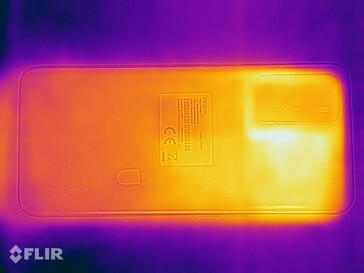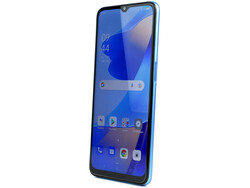Oppo A16s smartphone review - Inexpensive endurance runner with NFC
Possible competitors in comparison
Bewertung | Datum | Modell | Gewicht | Speicher | Groesse | Aufloesung | Refresh-Rate | Preis ab |
|---|---|---|---|---|---|---|---|---|
| 77 % | 11/2021 | Oppo A16s Helio G35, PowerVR GE8320 | 190 g | 64 GB eMMC Flash | 6.52" | 1600x720 | 060 Hz | |
| 80.5 % | 07/2021 | Xiaomi Poco M3 Pro 5G Dimensity 700, Mali-G57 MP2 | 190 g | 128 GB UFS 2.2 Flash | 6.50" | 2400x1080 | 090 Hz | |
| 75.7 % | 06/2021 | Samsung Galaxy M12 Exynos 850, Mali-G52 MP1 | 214 g | 64 GB eMMC Flash | 6.50" | 1600x720 | 090 Hz | |
| 77.2 % | 02/2021 | Realme 7i Helio G85, Mali-G52 MP2 | 208 g | 64 GB eMMC Flash | 6.50" | 1600x720 | 060 Hz |
Case, equipment and operation
The Oppo A16s is mostly made of plastic, but still has a high-quality look and solid build. Only the front is protected by Panda MN228 glass. The Oppo smartphone is available in Crystal Black and Pearl Blue and is protected against splashing water according to IPX4.
The phone's features are typical for the class. The A16s offers full-fledged dual-SIM (2x nano) and microSD support. The slot for memory expansion demonstrates good transfer rates in the copy test and also masters the exFAT file system. The USB port works according to the 2.0 standard and provides OTG so that external storage media as well as peripherals can be connected to the smartphone. By the way, the only difference to the Oppo A16 without the s appendage is that the tested version has an NFC chip.
Google Android 11 is used as the operating system, over which Oppo strips its ColorOS user interface in version 11.1. The security updates are up to August 5, 2021 at the time of the test, which is still fairly up-to-date. Unfortunately, a DRM certification is missing, so correspondingly protected content cannot be played in HD.
At best, LTE is available for mobile Internet access. The frequency equipment is decent, so there should not be any restrictions in Europe. The telephony features are good as long as the A16s is held to the ear and noise is not too loud, because the latter is only filtered out moderately. It does reverberate slightly in speaker mode, but the quality and microphone range are otherwise decent. VoLTE is supported.
A dual-band module with Wi-Fi 5 is available for Wi-Fi connections, which provides decent transmission rates in combination with our reference router Netgear Nighthawk AX12. The observed fluctuations in data reception are not noticed negatively in everyday use.
The touchscreen is protected ex-works with a screen protector that has good gliding properties and has been applied cleanly. A fingerprint sensor in the power button is available for biometric security. It has good recognition rates and works at a decent speed. Alternatively, facial recognition via the front-facing camera is possible, but it is less secure
| SD Card Reader - average JPG Copy Test (av. of 3 runs) | |
| Oppo A16s (Angelbird AV Pro V60) | |
| Average of class Smartphone (10.9 - 77, n=98, last 2 years) | |
| Xiaomi Poco M3 Pro 5G (Toshiba Exceria Pro M501) | |
Cross Platform Disk Test (CPDT)
| Networking | |
| iperf3 transmit AX12 | |
| Realme 7i | |
| Oppo A16s | |
| Xiaomi Poco M3 Pro 5G | |
| Samsung Galaxy M12 | |
| iperf3 receive AX12 | |
| Xiaomi Poco M3 Pro 5G | |
| Oppo A16s | |
| Realme 7i | |
| Samsung Galaxy M12 | |
AI triple camera in Oppo A16s
The front-facing camera does not have a particularly high resolution, but it still enables quite good selfies. Especially the automatic HDR function provides better results in backlight than many rivals.
The triple camera offers standard fare. The main lens takes quite decent pictures, but they are characterized by weak dynamics and fine details look frayed in the background. The two additional lenses are responsible for depth of field and close-ups (macro).
Videos are recorded in Full HD with 30 frames per second, at best, on both front and rear cameras.
Image Comparison
Choose a scene and navigate within the first image. One click changes the position on touchscreens. One click on the zoomed-in image opens the original in a new window. The first image shows the scaled photograph of the test device.
Wide-angleWide-angleZoom (5x)Low-Light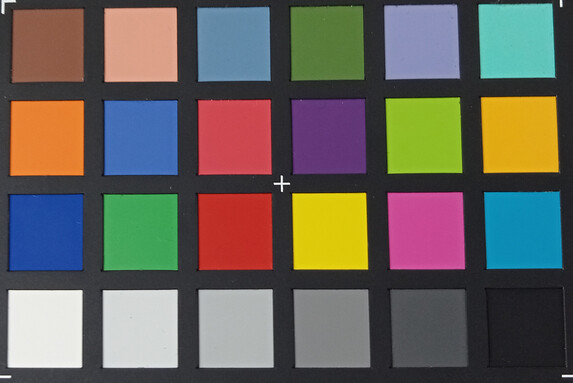

Display - Oppo smartphone with bright LCD
The 6.52-inch LC screen of Oppo's A16s only has a small HD resolution. This does not result in a particularly high pixel density, but you have to look very closely to see a pixel structure.
The screen's brightness is a bit higher with activated ambient light and reaches up to 607 cd/m² in the screen's center. If the luminosity is regulated manually, 549 cd/m² are still reached and with an even distribution of bright and dark areas (APL50), it is 576 cd/m².
The display's white balance is quite cool in the default settings. However, if the color temperature is set to as warm as possible in the settings, the display is quite natural and, especially considering the price range, really good. However, the black level could have been a bit better, but it is still sufficient for a strong contrast ratio.
| |||||||||||||||||||||||||
Brightness Distribution: 90 %
Center on Battery: 607 cd/m²
Contrast: 1167:1 (Black: 0.52 cd/m²)
ΔE Color 3.1 | 0.5-29.43 Ø5
ΔE Greyscale 2 | 0.57-98 Ø5.3
92.9% sRGB (Calman 2D)
Gamma: 2.17
| Oppo A16s LCD, 1600x720, 6.52 | Xiaomi Poco M3 Pro 5G IPS, 2400x1080, 6.50 | Samsung Galaxy M12 IPS, 1600x720, 6.50 | Realme 7i IPS, 1600x720, 6.50 | |
|---|---|---|---|---|
| Response Times | 0% | -17% | -4% | |
| Response Time Grey 50% / Grey 80% * | 48 ? | 39.6 ? 17% | 44 ? 8% | 40 ? 17% |
| Response Time Black / White * | 24 ? | 28 ? -17% | 34 ? -42% | 30 ? -25% |
| PWM Frequency | 926 ? | |||
| Screen | 32% | -38% | -60% | |
| Brightness middle | 607 | 427 -30% | 426 -30% | 597 -2% |
| Brightness | 586 | 404 -31% | 428 -27% | 569 -3% |
| Brightness Distribution | 90 | 87 -3% | 89 -1% | 91 1% |
| Black Level * | 0.52 | 0.17 67% | 0.46 12% | 0.74 -42% |
| Contrast | 1167 | 2512 115% | 926 -21% | 807 -31% |
| Colorchecker dE 2000 * | 3.1 | 1.5 52% | 4.89 -58% | 5.47 -76% |
| Colorchecker dE 2000 max. * | 6.7 | 2.1 69% | 9.42 -41% | 12.11 -81% |
| Greyscale dE 2000 * | 2 | 1.6 20% | 4.8 -140% | 6.9 -245% |
| Gamma | 2.17 101% | 2.3 96% | 2.27 97% | 2.363 93% |
| CCT | 6806 96% | 6652 98% | 7669 85% | 8091 80% |
| Total Average (Program / Settings) | 16% /
26% | -28% /
-34% | -32% /
-49% |
* ... smaller is better
Display Response Times
| ↔ Response Time Black to White | ||
|---|---|---|
| 24 ms ... rise ↗ and fall ↘ combined | ↗ 10.8 ms rise | |
| ↘ 13.2 ms fall | ||
| The screen shows good response rates in our tests, but may be too slow for competitive gamers. In comparison, all tested devices range from 0.1 (minimum) to 240 (maximum) ms. » 48 % of all devices are better. This means that the measured response time is worse than the average of all tested devices (21.5 ms). | ||
| ↔ Response Time 50% Grey to 80% Grey | ||
| 48 ms ... rise ↗ and fall ↘ combined | ↗ 22 ms rise | |
| ↘ 26 ms fall | ||
| The screen shows slow response rates in our tests and will be unsatisfactory for gamers. In comparison, all tested devices range from 0.2 (minimum) to 636 (maximum) ms. » 80 % of all devices are better. This means that the measured response time is worse than the average of all tested devices (33.7 ms). | ||
Screen Flickering / PWM (Pulse-Width Modulation)
| Screen flickering / PWM not detected | |||
In comparison: 53 % of all tested devices do not use PWM to dim the display. If PWM was detected, an average of 17900 (minimum: 5 - maximum: 3846000) Hz was measured. | |||
Performance, emissions and battery life
The Oppo A16s can rely on a MediaTek Helio G35 with 4 GB of working memory. The integrated PowerVR GE8320 is responsible. The processor provides an appealing everyday performance, but small stutters can be seen from time to time. The performance is comparable with that of the Exynos 850 but the old GPU of the G35 is a real gaming fun killer. In return, the Oppo smartphone always stays pleasantly cool.
The speaker on the chin side provides a quite good sound output, which is treble-heavy but can convince especially in the medium volume range. The audio jack enables a decent sound (signal-to-noise ratio: 66.43 dBFS) via cable. Bluetooth with all common audio codecs (SBC, AAC, aptX, aptX HD, aptX Adaptive, aptX TWS+ and LDAC) is available as an alternative.
The 5,000 mAh battery of the A16s ensures enormously long screen runtimes, so that two days of use should easily be possible in sporadic use.
| GFXBench | |
| on screen Aztec Ruins Normal Tier Onscreen (sort by value) | |
| Oppo A16s | |
| Xiaomi Poco M3 Pro 5G | |
| Samsung Galaxy M12 | |
| Realme 7i | |
| Average Mediatek Helio G35 (7.4 - 8.1, n=5) | |
| Average of class Smartphone (3.6 - 123, n=226, last 2 years) | |
| 1920x1080 Aztec Ruins Normal Tier Offscreen (sort by value) | |
| Oppo A16s | |
| Xiaomi Poco M3 Pro 5G | |
| Samsung Galaxy M12 | |
| Realme 7i | |
| Average Mediatek Helio G35 (4.1 - 4.2, n=5) | |
| Average of class Smartphone (2.3 - 229, n=226, last 2 years) | |
| on screen Aztec Ruins High Tier Onscreen (sort by value) | |
| Oppo A16s | |
| Xiaomi Poco M3 Pro 5G | |
| Samsung Galaxy M12 | |
| Realme 7i | |
| Average Mediatek Helio G35 (4.7 - 5, n=5) | |
| Average of class Smartphone (2.8 - 119, n=226, last 2 years) | |
| 2560x1440 Aztec Ruins High Tier Offscreen (sort by value) | |
| Oppo A16s | |
| Xiaomi Poco M3 Pro 5G | |
| Samsung Galaxy M12 | |
| Realme 7i | |
| Average Mediatek Helio G35 (1.4 - 1.5, n=5) | |
| Average of class Smartphone (0.85 - 94, n=226, last 2 years) | |
| Oppo A16s | Xiaomi Poco M3 Pro 5G | Samsung Galaxy M12 | Realme 7i | Average 64 GB eMMC Flash | Average of class Smartphone | |
|---|---|---|---|---|---|---|
| AndroBench 3-5 | 273% | 79% | 61% | 5% | 526% | |
| Sequential Read 256KB | 289.2 | 954 230% | 311.4 8% | 316.4 9% | 273 ? -6% | 1508 ? 421% |
| Sequential Write 256KB | 168.4 | 489.1 190% | 249.3 48% | 187.2 11% | 176.8 ? 5% | 1118 ? 564% |
| Random Read 4KB | 45.32 | 155.8 244% | 120.9 167% | 77.4 71% | 59.1 ? 30% | 247 ? 445% |
| Random Write 4KB | 35.23 | 186.1 428% | 67.2 91% | 89.5 154% | 31.7 ? -10% | 272 ? 672% |
Temperature
(+) The maximum temperature on the upper side is 34.1 °C / 93 F, compared to the average of 35 °C / 95 F, ranging from 21.9 to 56 °C for the class Smartphone.
(+) The bottom heats up to a maximum of 32 °C / 90 F, compared to the average of 33.8 °C / 93 F
(+) In idle usage, the average temperature for the upper side is 30.5 °C / 87 F, compared to the device average of 32.7 °C / 91 F.
Speaker
Oppo A16s audio analysis
(+) | speakers can play relatively loud (92.1 dB)
Bass 100 - 315 Hz
(-) | nearly no bass - on average 26.8% lower than median
(+) | bass is linear (4.3% delta to prev. frequency)
Mids 400 - 2000 Hz
(±) | reduced mids - on average 5.6% lower than median
(+) | mids are linear (4.3% delta to prev. frequency)
Highs 2 - 16 kHz
(±) | higher highs - on average 5.5% higher than median
(+) | highs are linear (1.7% delta to prev. frequency)
Overall 100 - 16.000 Hz
(±) | linearity of overall sound is average (18.4% difference to median)
Compared to same class
» 14% of all tested devices in this class were better, 8% similar, 78% worse
» The best had a delta of 12%, average was 38%, worst was 134%
Compared to all devices tested
» 35% of all tested devices were better, 8% similar, 57% worse
» The best had a delta of 4%, average was 25%, worst was 134%
Xiaomi Poco M3 Pro 5G audio analysis
(+) | speakers can play relatively loud (93.5 dB)
Bass 100 - 315 Hz
(-) | nearly no bass - on average 23.5% lower than median
(+) | bass is linear (3.9% delta to prev. frequency)
Mids 400 - 2000 Hz
(±) | reduced mids - on average 6.9% lower than median
(+) | mids are linear (5% delta to prev. frequency)
Highs 2 - 16 kHz
(+) | balanced highs - only 2.6% away from median
(+) | highs are linear (2.1% delta to prev. frequency)
Overall 100 - 16.000 Hz
(±) | linearity of overall sound is average (15.9% difference to median)
Compared to same class
» 3% of all tested devices in this class were better, 4% similar, 94% worse
» The best had a delta of 12%, average was 38%, worst was 134%
Compared to all devices tested
» 20% of all tested devices were better, 5% similar, 75% worse
» The best had a delta of 4%, average was 25%, worst was 134%
Battery life
| Oppo A16s 5000 mAh | Xiaomi Poco M3 Pro 5G 5000 mAh | Samsung Galaxy M12 5000 mAh | Realme 7i 6000 mAh | Average of class Smartphone | |
|---|---|---|---|---|---|
| Battery Runtime | |||||
| WiFi Websurfing | 1053 | 1025 -3% | 926 -12% | 1307 24% | 914 ? -13% |
Pros
Cons
Verdict - The Oppo A16 with the small plus
The Oppo A16s is a successful entry-level smartphone that primarily convinces with a bright and PWM-free display, full-fledged dual-SIM and very long battery runtimes. It is also one of the few phones in its class that is also equipped with an NFC chip, which not only enables fast pairing of Bluetooth devices, but also mobile payments.
The Oppo A16s has a lot to offer despite its low price.
It is only a pity that Oppo does without a DRM certification. Those who also like to play games on the smartphone will have to get used to reduced details and long loading times in the A16s. The camera is certainly not a highlight, but it is still sufficient for occasional snapshots.
A strong alternative is the Poco M3 Pro 5G, which, in addition to 5G, also has a higher-resolution 90 Hz display, but it is darker. The Galaxy M12 on the other hand, offers better cameras, but has to make concessions in battery runtimes and Wi-Fi speed.
Price and availability
The Oppo A16s starts with an MSRP of 179 Euros (~$207), but is already available for under 150 Euros (~$173). Among others, it is available at Amazon (DE), MediaMarkt (A16 without NFC) or Saturn but can also be purchased with or without a contract at Sparhandy.
Oppo A16s
-
10/26/2021 v7
Daniel Schmidt


 Deutsch
Deutsch English
English Español
Español Français
Français Italiano
Italiano Nederlands
Nederlands Polski
Polski Português
Português Русский
Русский Türkçe
Türkçe Svenska
Svenska Chinese
Chinese Magyar
Magyar